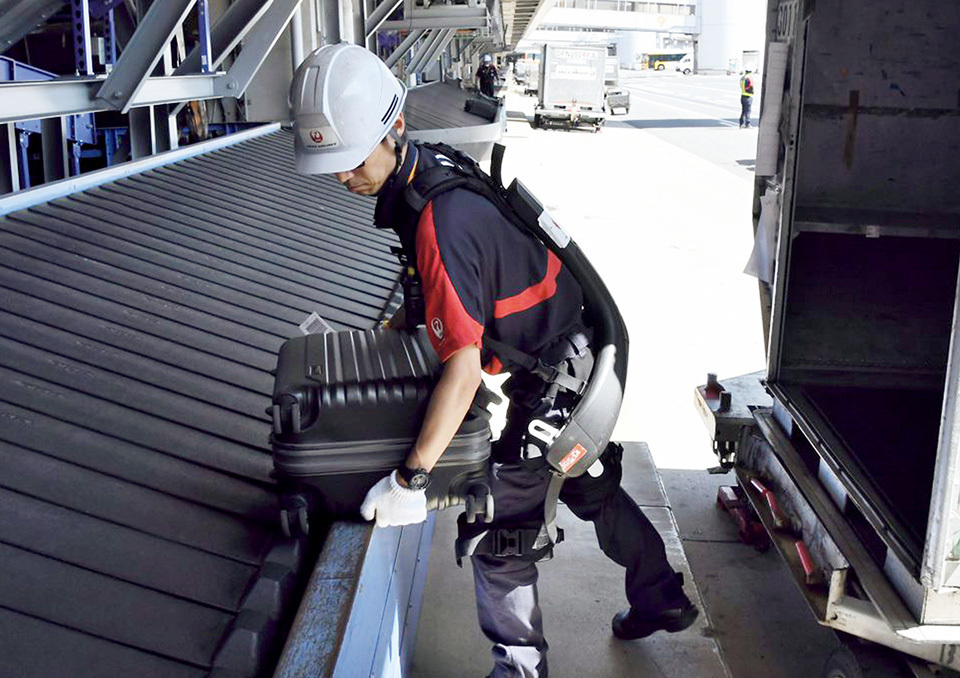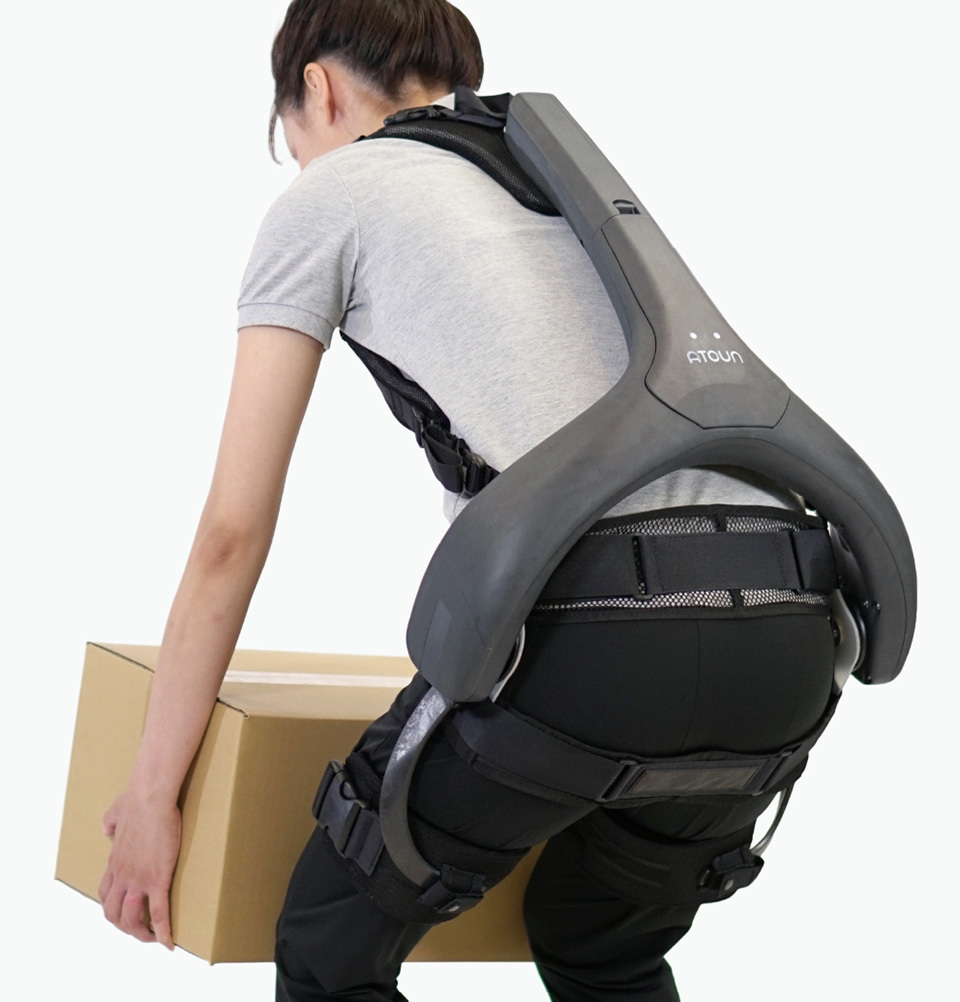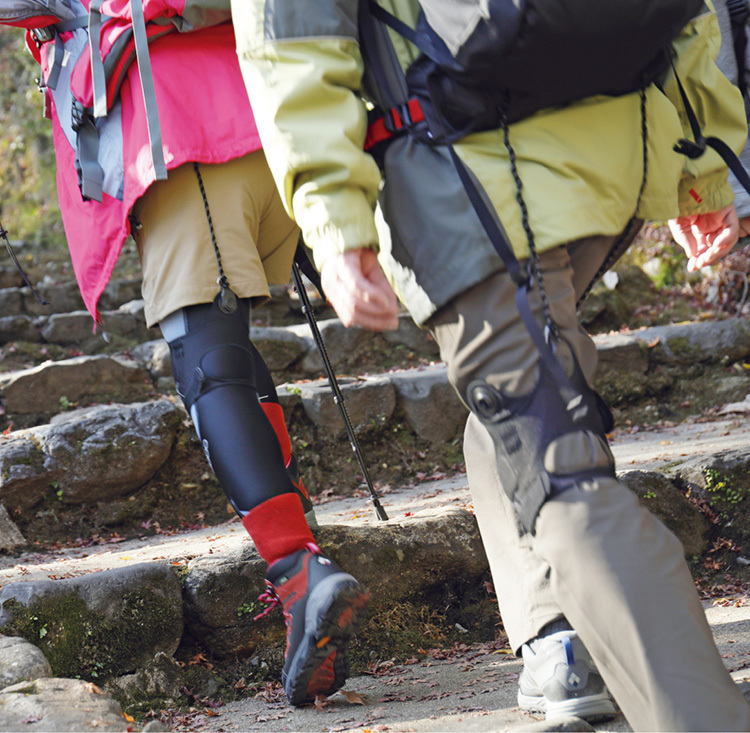Simply by wearing a special device, people are now able to easily lift heavy objects, alleviating strain on the body. Powered exoskeletons from Japan will give support to our way of life in the future.
Confronted with an aging population, Japan is progressing technological developments and their social implementation in order to enable its population to live long and healthy lives. A powered exoskeleton, one of these new technological developments, is a device that runs on a system of motors, elastics, and springs to support the movements of various parts of the body, such as the arms, legs, and lower back. The version for the lower back, for example, can be worn simply as a backpack, but it allows wearers to lift heavy objects weighing tens of kilograms with only a low burden on the body. Such wearable machines are increasingly being used in the field of caregiving and in workplaces where repeated handling of heavy items is required.
Innophys Co., Ltd. has developed a powered exoskeleton for the lower back called the Muscle Suit Every, which functions using air pressure, initially pumped by hand into the suit. Because of its simple structure, the suit is lightweight at just 3.8kg. However, it can achieve a maximum assistive force of 25.5kgf (which is equivalent to reducing a load by 25.5kg). Priced at approximately US$1,500 per unit, the suit is also affordable for the average consumer. In consequence, it has quickly gained widespread recognition, meeting the needs of everyday-life situations, from nursing in the home to cultivating vegetable gardens and shoveling snow.
Contrastingly, the Atoun Model Y, a wearable robot developed by Atoun Inc., is powered by electricity, and has a built-in sensor that detects movement in the body’s core, then controls the power via the motor. The robot automatically and smoothly assists the human body, according to the situation and the type of work involved. Besides supporting the lower back, Model Y will soon be equipped with the additional function of supporting the arm’s movements and will see further functional reinforcements in the future. Because of its durability, along with its ability to provide stable support even for sustained work over long hours, the Atoun Model Y suit is being introduced in professional work settings, such as manufacturing and logistics. A specific example is in ground handling at international airports, where the loading and unloading of baggage is carried out repeatedly.

An airport baggage-handler wearing the Atoun Model Y.

Atoun CEO Fujimoto wishes to create something that supports the diverse physical abilities of all individuals, thus making something that everyone feels attracted to.

Participants of a sightseeing tour wearing the Himico, a powered exoskeleton that supports walking.
Both companies stress that they are not only aiming to support workplaces, but also to contribute towards helping people have longer and healthier lives. “In the future, I would like to develop something that can be worn by persons receiving care, rather than caregivers, to help them move more easily,” comments KOBAYASHI Hiroshi, an engineering professor at the Tokyo University of Science, who is the developer and founder of Innophys. As a step towards this goal, the firm has, in collaboration with the Japanese government and academia, initiated research on the effective use of the Muscle Suit Every for physical training. This research is aiming to explore measures to prevent the decline in the strength and mobility of the human body, which leads to decreased participation in society and eventually to the need for full-time care.
As well as the Model Y, Atoun has also developed a powered exoskeleton to support walking. The company, in tandem with a travel agency, has launched a sightseeing tour in which participants in need are equipped with the suits. One participant of the tour, who wore the suit to climb to the top of a long 400-step stone staircase, said with a smile, “As I cannot move my knees well, I was nervous even to go out with my friends. But when I put this device on, I was able to lift my legs very softly and lightly.” At some point in the near future, remotely operated fitness training will become a reality. Information from sensors that are built into the suit is shared wirelessly, allowing a trainer to control the device from distant locations to assist or adjust loads on the wearer. In this manner, the device will be able to provide personalized exercise support at home for the physically weak or for those who just want to stay fit. “The ultimate goal is to create a world like that found in science fiction—such as the movies and cartoons we watched as children—where people can move with fewer physical restrictions,” says Atoun President and CEO FUJIMOTO Hiromichi enthusiastically. The functions of these powered exoskeletons from Japan will be further enhanced, helping to enrich society in the future.


